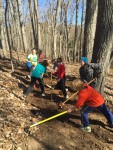On November 15, 2005, the Charlottesville Area Mountain Bike Club (CAMBC) and the Rivanna Trail Foundation (RTF) tackled a big problem! A dangerous section of trail ran within inches of a cliff, a serious cliff!

Yes, that’s the trail surface at the bottom of the picture!
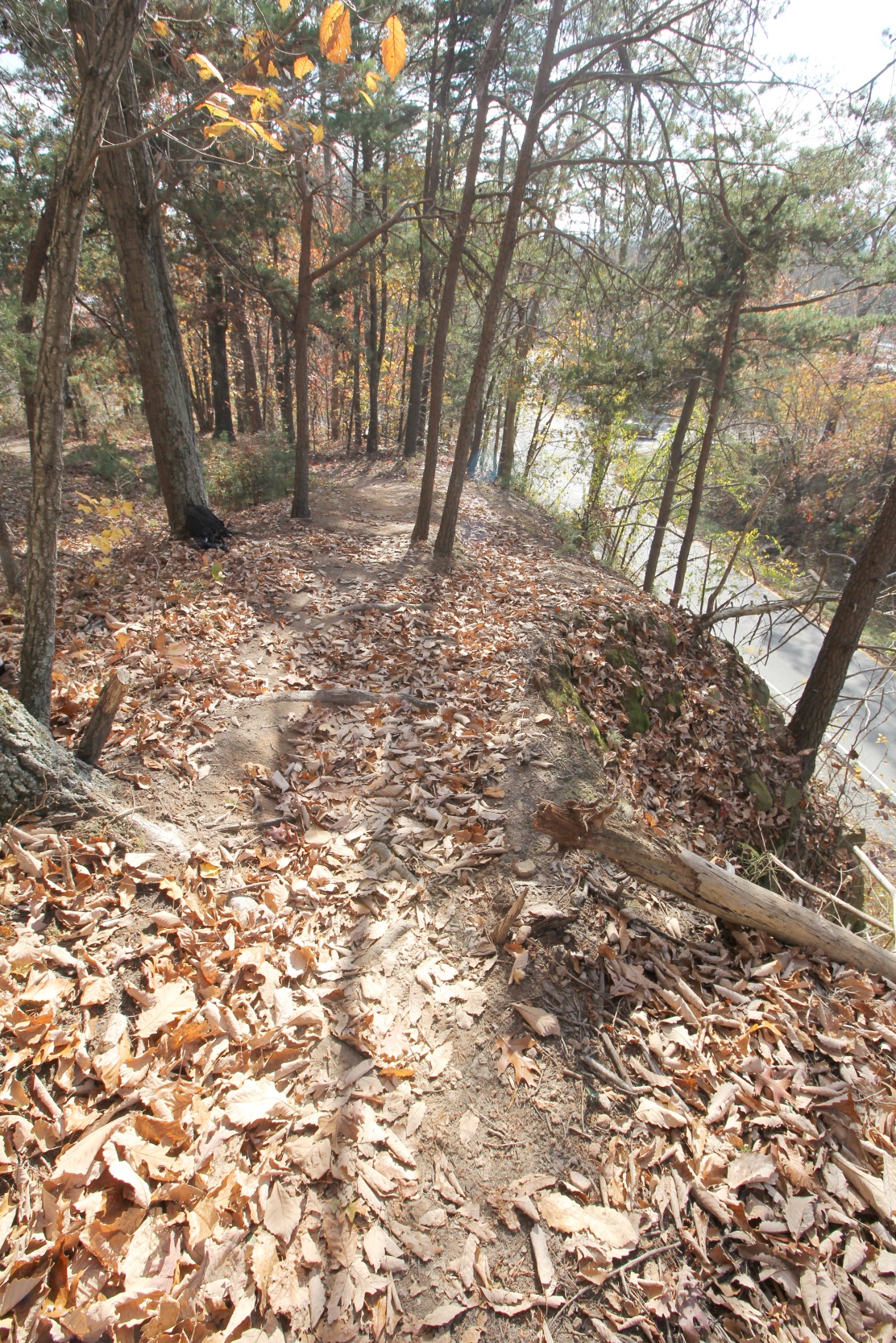
Had anyone gone over the edge, a 100+ foot tumble would have landed them on the highway ramp. It could have been a really bad day for someone. Luckily, no one has been hurt yet.
And just as bad, our beloved hill was having an erosion problem just 50 feet down the trail.
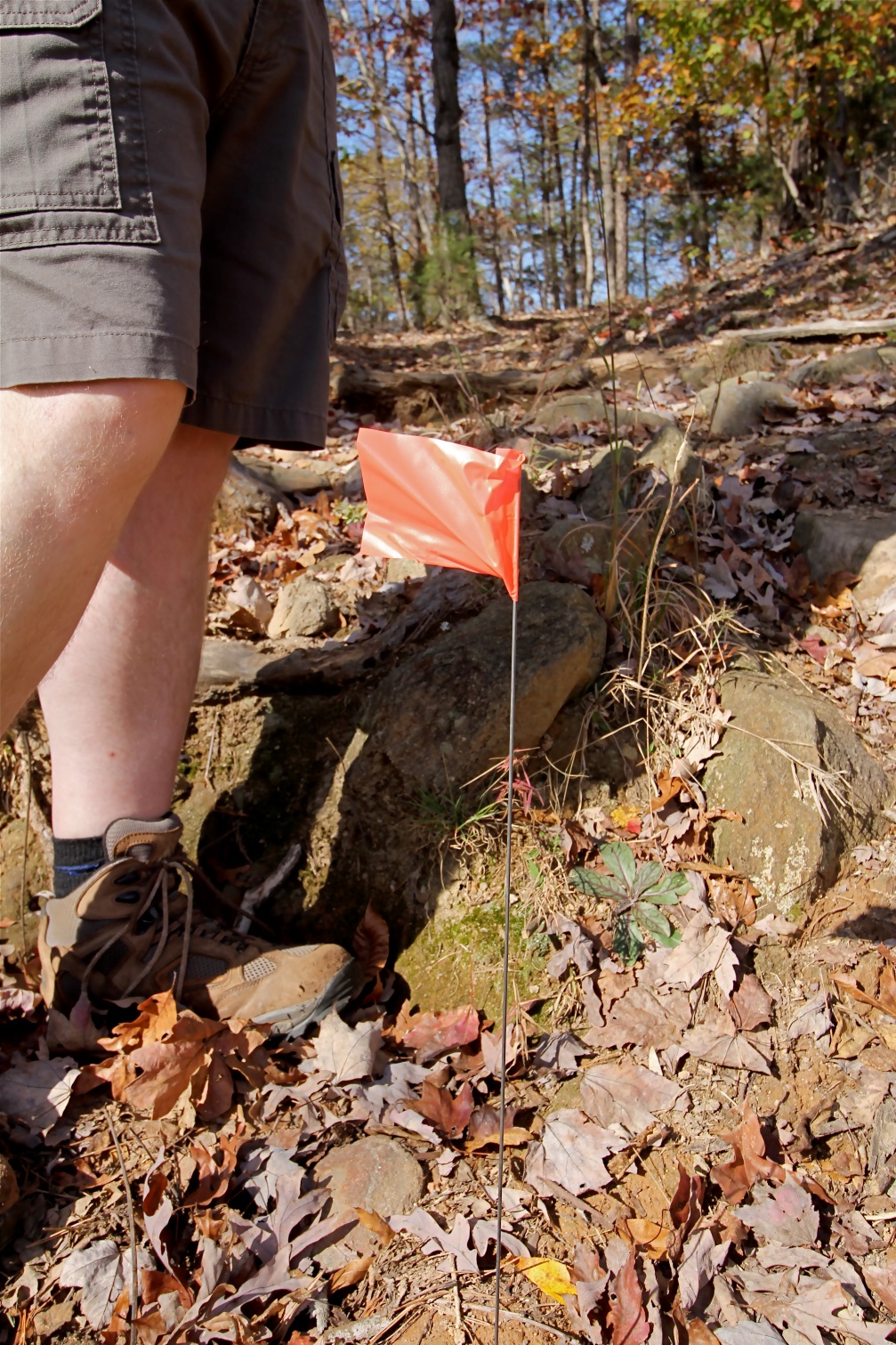
This trench actually extended almost ¼ mile up the hill. The old trail was a fall line trail – every time it rained, the water simply had no other place to run! Erosion was out of control. Almost 2 foot of soil has washed away from this section of trail already. Corrective action was necessary.
So, UVA, CAMBC and RTF to the rescue! CAMBC and RTF prepared for the trailwork day by spending time scouting the hill side and figuring out the best place to move the trail. The trail had many constraints: it needed to be appealing to users, safe from danger, have a sustainable grade, include appropriate water drainage features, connect users to the other parts of the trail system, and avoid a telecommunications cable. After design, we marked the trail for the volunteers to build on the work day. We also prepped the work site by having a qualified chainsaw operator with proper safety gear remove several trees that had fallen in the path of the planned trail, but no live trees were felled in the building of the trail. This step is important to do before volunteers are in the area for everyone’s safety.
After the work site was properly prepared, motivated volunteers were invited. And we started early, 8 a.m. on a Saturday morning! Volunteers of all ages were trained on how to clear branches out of the way and created the new contour trail by benching the ground. Here, Jon C. is giving a tutorial on how to build trail.
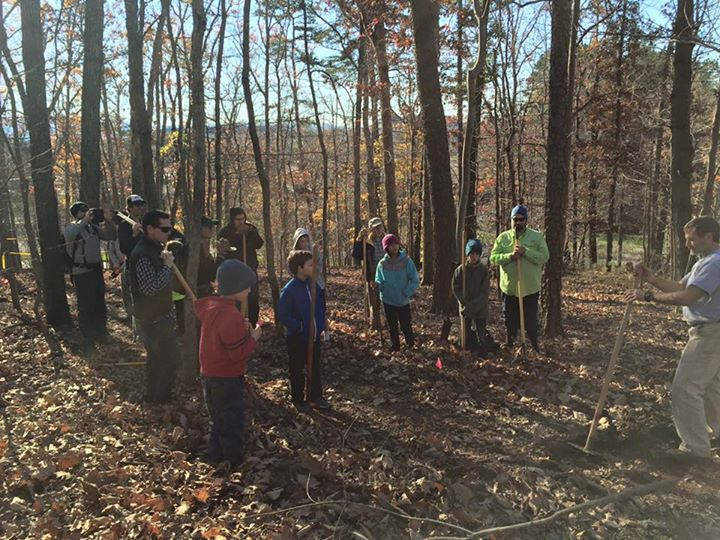
While another group gets started on some raking.

Benching is the process of creating a trail tread that is both pleasant to walk on, but still shaped so that water can flow off the trail with minimal erosion. Here the kids are putting to use what they learned on how to create benched trail.
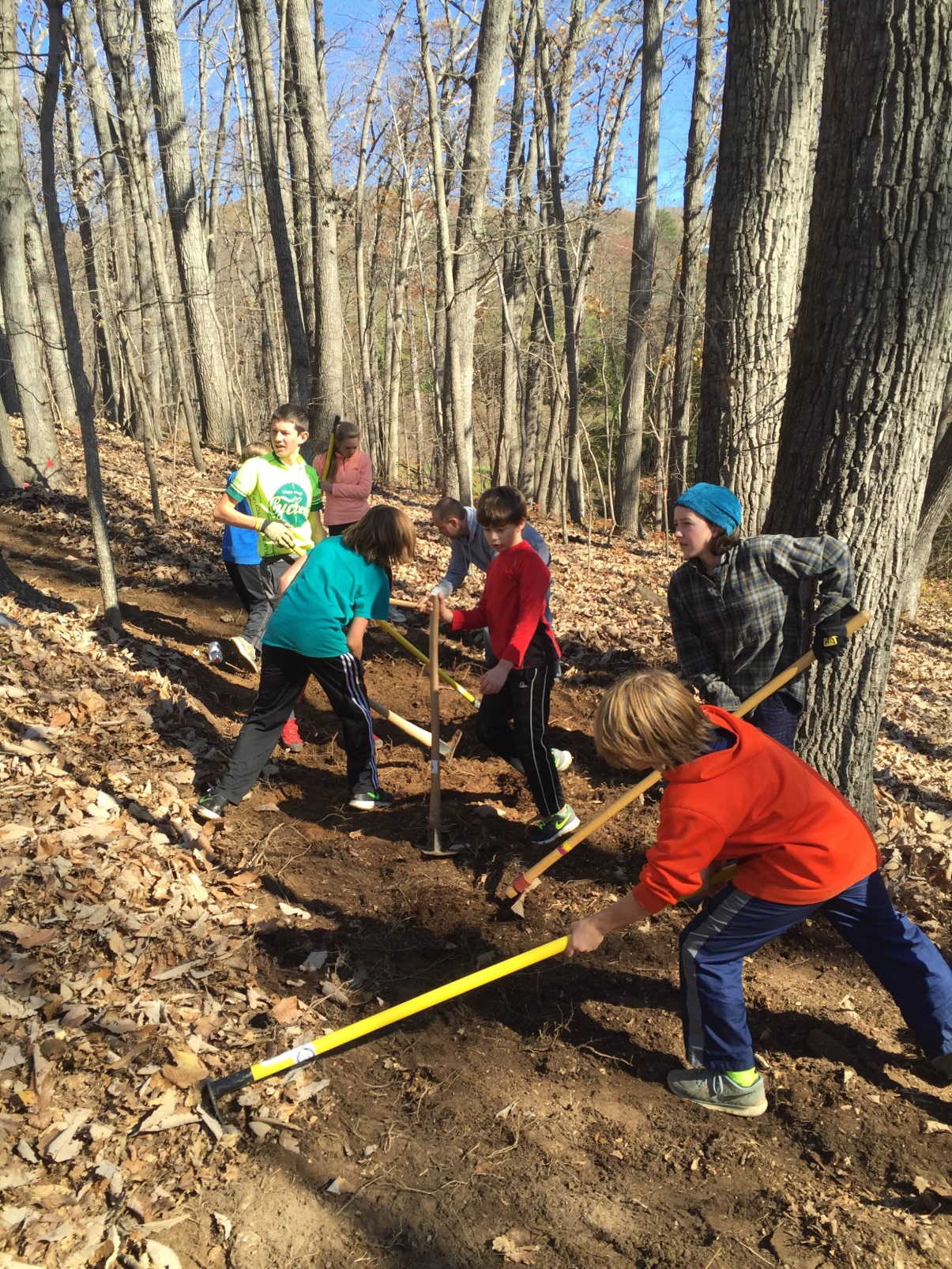
Another group of volunteers also had to create a properly shaped switch back turn. It involved starting with moving a lot of local rock to form a firm foundation so that the turn would maintain its shape for centuries.

Then using dirt removed during the benching process for other parts of the trail to form a trail tread in the turn. The final product is beautiful and does not adequately portray the amount of skill and “sweat equity” involved. Building turns is super hard work, and this crew is justifiably proud of their effort!

Of course, we had to test that the trail would meet the need of being pleasant to users.
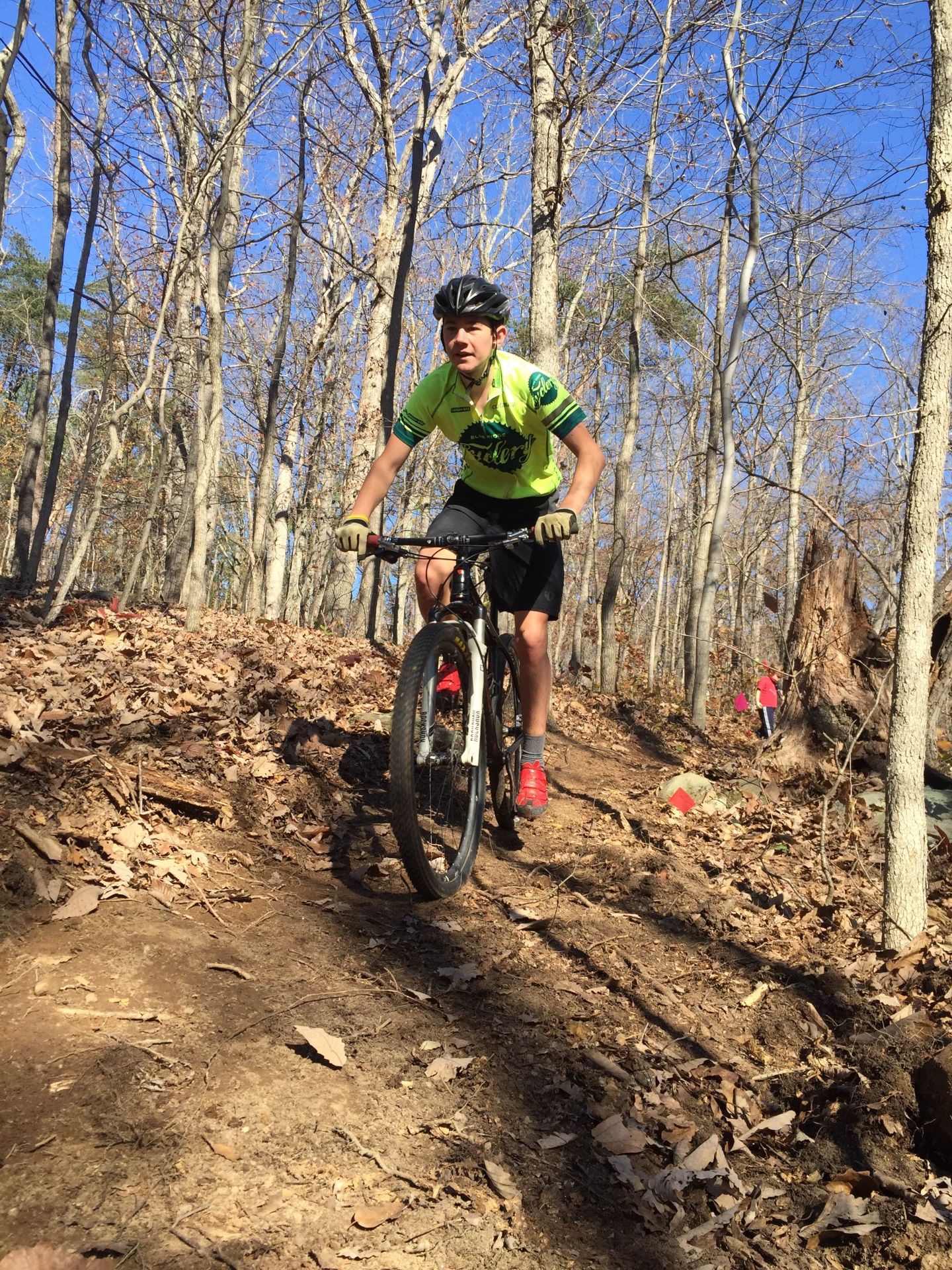
Another important aspect of re-routing trail is closure of the old trail. Many people think it’s simply piling some sticks or rocks at the entrance to the old trail, or maybe putting up a sign. That’s not good enough, because some users may still want to use the old trail and might reopen the old trail. Further, that does nothing to control the erosion issue on the old trail.
To solve these issues volunteers started by using hand tools to break up the tread on the trail to be closed so that new vegetation can grow.

Without this step, the old trail tread is too compacted for plants to get a foothold. New plants are the key to erosion control. Then we brought in organic material (dead trees, leaves, grass roots) from the new trail construction part of the project to disguise the old trail.
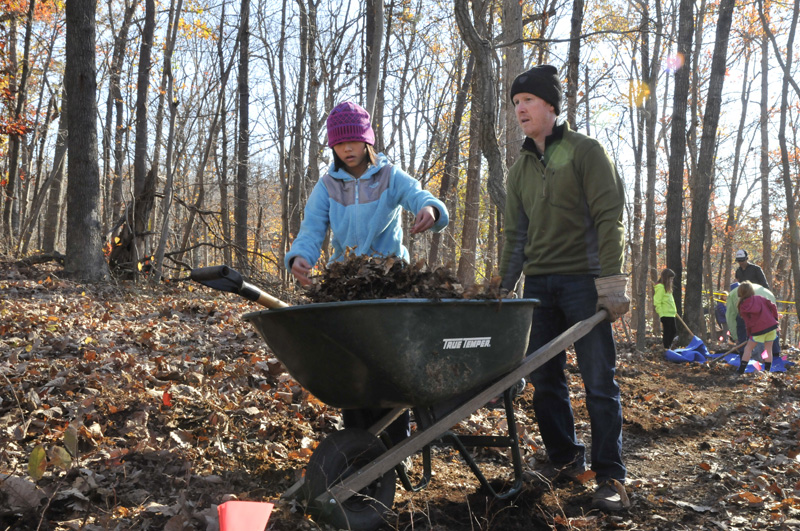
We also transplanted small trees into the trail to close the “line of sight” so that trail users do not experience the opened corridor as a possible alternate route to use. At the end of the process, the goal is to have the closed trail appear as if there was never a trail there.
Big thanks to the students and community members who participated! We had members of CAMBC, RTF, the Cutaway Mountain Bike Team, the CRC/BRC Mountain Bike Team, UVA Outdoors Club, UVA Cycling, and UVA’s Madison House totaling over 60 people and over 220 volunteer hours!
Unfortunately, the ¼ mile of trenched trail was more than could be closed by hand and volunteers were only able to close the most dangerous section on this workday. CAMBC is in the process of planning a follow up work day to close the rest of the eroded sections.
If you aren’t a member of CAMBC or RTF, please consider joining. Your support helps your local trails look like this.

